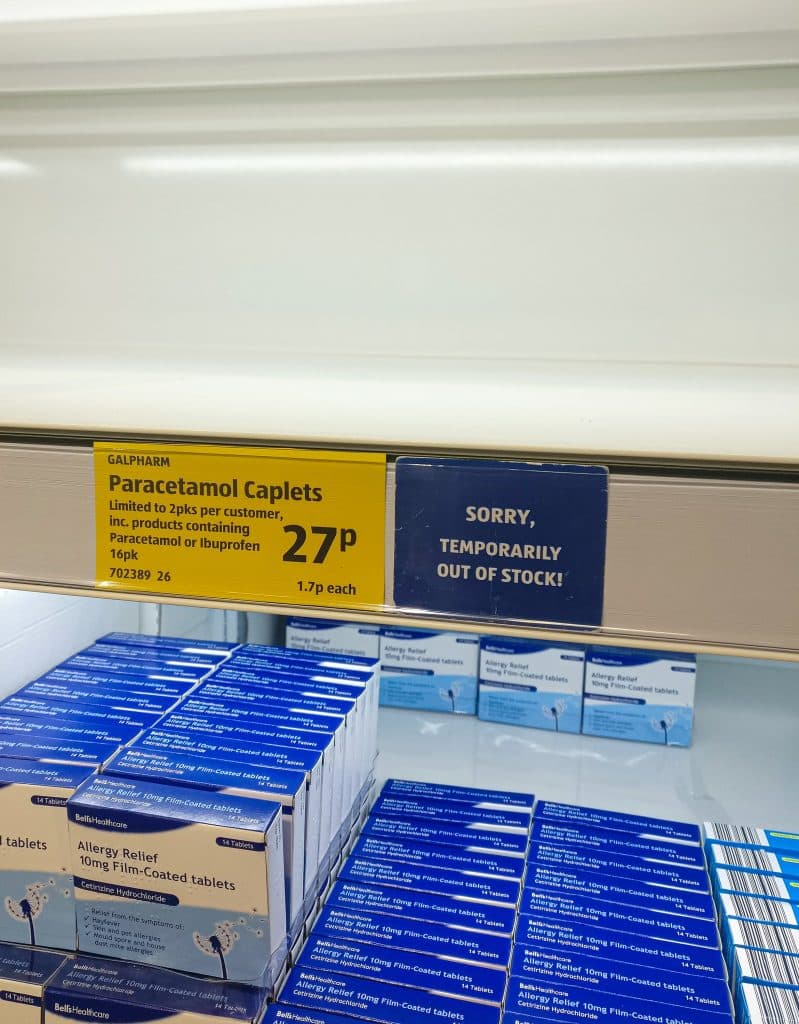
Governments might be about to discover that if they want resilient supply chains to avoid drug shortages, there’s going to be a cost.
As Warren Buffett’s famous adage has it, price is what you pay; value is what you get. When it comes to critical drugs, though, there needs to be a relationship between the two. And when prices are pushed down, the true cost of low drug prices becomes apparent on the pharmaceutical supply chain.
We saw during the pandemic how penny-pinching could undermine public health priorities. For all the complaints from the EU about AstraZeneca’s Covid19 Vaccine supply chain issues, there’s little doubt its quest to drive the price down (on a drug being produced at cost) contributed to the problem. Now European and the UK governments look like they could be making a similar mistake again.
Last month, the FT reported the tensions between governments and drug companies over clawback payment policies. In the UK, these are leading to pharma businesses paying back £3.3bn – over a quarter of their sales. Germany and France are also insisting on similar policies.
Already, AbbVie and Eli Lilly have pulled out of the voluntary UK pricing agreement, while German group Bayer has said it intends to “deprioritise” Europe, which it claims is becoming “innovation unfriendly.”
“European governments are trying to create incentives for research investments, but they are making our lives miserable on the commercial side,” its head of pharmaceuticals, Stefan Oelrich, told reporters.
It’s not just innovation that’s at risk, though. Governments’ determination to cut costs also has the potential to undermine another of their policy priorities: Ensuring the availability of critical drugs.
Short(age)-Sighted: Learning from Drug Shortage Data
Recent months have been a reminder of the continual problems all countries face with drug shortages. Last month, for instance, the US FDA issued its guidance on compounding ibuprofen oral suspension products to address supply shortages amidst record demand. Before the New Year, meanwhile, it was the UK government intervening to tackle the supply of penicillin during the Strep A outbreak.
“We are taking decisive action to address these temporary issues and improve access to these medicines by continuing to work with manufacturers and wholesalers to speed up deliveries, bring forward stock they have to help ensure it gets to where it’s needed, and boost supply to meet demand as quickly as possible,” the minister of state for health Will Quince reassured people.
But government efforts to push down prices may do entirely the opposite.
Our analysis of the causes for FDA Drug shortages collected between 2018 and 2022 (as published at https://www.accessdata.fda.gov/scripts/drugshortages/default.cfm), reveal that 33% were due to discontinuations. Lack of profitability is never explicitly cited as a reason, but it is most likely that that drug will be discontinued because it is no longer commercially viable. Another 15% was down to demand variability. Again, supply is much less likely to be sufficient to soak up spikes in demand where the profitability of the drug is marginal.
The other feature of the Drug Shortages dataset is the frequent recurrence of certain older, less profitable drugs, which are perpetually in shortage because there are simply not enough manufacturers of those drugs. It does not take much to go wrong with one manufacturer, before there is an overall shortage of that particular medicine. Even if the demand invariably exceeds supply, new manufacturers have no incentive to make that drug if there is little reward.
Closer to Home
Two other government policy priorities only exacerbate the problem. The first is the desire to see pharmaceuticals manufactured closer to home. Onshoring was among the big ideas in the US Department of Health and Human Services report on essential medicines’ supply chain resiliency published last year.
As we’ve noted before, though, it’s most often low-cost generic drugs that see shortages and are least likely to be viable to onshore from cheap production centres abroad. And it’s even less likely if governments are going to squeeze the margins yet further.
The second area where government – through the best intentions – makes shortages more likely is regulation. Regulatory action can often itself be a cause of disruptions to supplies, but it also adds to costs and discourages competition that could bring down prices naturally. Again, artificially reducing the price governments pay for drugs while keeping the costs of manufacturers high through regulatory requirements is not necessarily a recipe for success. The true cost of low drug prices becomes apparent in many other ways.
In short, if governments really want resilient, abundant and local supplies of critical generic drugs, they’re probably not going the right way about it.
Investments in Technology
Of course, it’s not solely down to governments. The pharma industry itself has to play its part in ensuring supply chain resiliency. But there’s little evidence it’s shirking this responsibility.
Pharma businesses, like everyone else, are investing heavily in supply chain risk management post Covid. It is a trend across industries, with Gartner finding that almost eight in ten large organisations are focussing on supply chain resilience and risk management. It has also found organisations far more likely to be planning to invest in making their supply chains more agile and resilient (89 and 87%, respectively) than they are to be favouring domestic operations (52%) or shifting from a global to regional supply chain model (30%).
There is a lot more that can be done here. As Gartner had noted previously, Covid 19 put supply chain risk management (SCRM) front and centre, as many found their existing capabilities ineffective. Despite this, there was still “no clear owner of the process across supply chain functions”. What’s required is a re-examination of SCRM strategies and “targeted investments,” the consultant said.
Technology will be a big part of that, with organisations drawing from a wide range of solutions and approaches from the supply chain control tower and digital twins, to artificial intelligence, supply chain as a service, blockchain, predictive analytics and so on. Crucially, though, the technologies are at various levels of maturity. Supply chain risk assessment software such as SCAIR®, have a long track record. They’re field proven. But for many, particularly newer technologies, the return on investment, while promising, is still uncertain.
You Get What You Pay For
That’s going to be important because, as Gartner also found – while supply chain resilience is a big issue for chief supply chain officers, it trails just behind cost optimisation. Gartner says those responsible for supply chains must balance investments in nascent, evolving and mature capabilities. That’s sensible – enabling businesses to back a variety of technologies and see which turn out the winners. We predict that Enterprise Supply Chain Risk Management (ESCRM) will shortly join their Magic Quadrant analysis. But budgets are not unlimited.
The amount businesses are prepared to invest in protecting their supply chains must be influenced by what those supply chains are worth. The higher the value, the larger pot there will be to share around the various potential technologies that can strengthen the supply chain and prevent shortages. Businesses – in pharma or elsewhere – will not invest heavily to protect supply chains for products with little profitability.
To put it another way, governments may find that for at least some drugs, they can have either very low prices or dependable supply – but not both.

